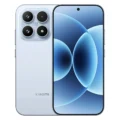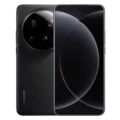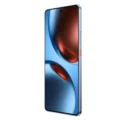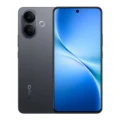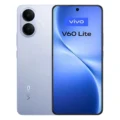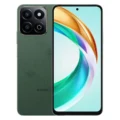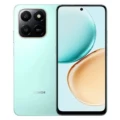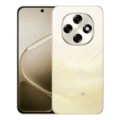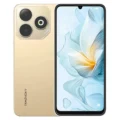Xiaomi Redmi K80 Ultra
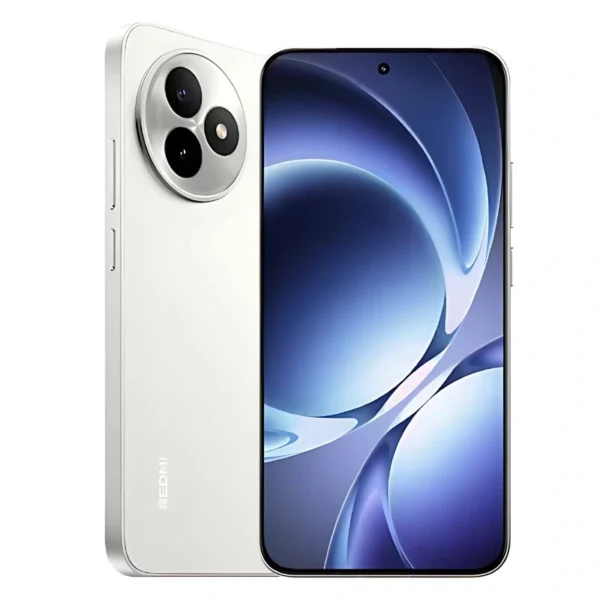


Xiaomi Redmi K80 Ultra price in bd
Xiaomi Redmi K80 Ultra is now available in variants 24GB+1TB. Now, Redmi K80 Ultra’s Price Coming Soon in Bangladesh.
Full Specifications
Price in BD
General Info
| Announced | Not announced yet |
| Status | Rumored |
| Brand | Xiaomi |
| Model | Redmi K80 Ultra |
Network
| Technology | GSM / CDMA / HSPA / CDMA2000 / LTE / 5G |
| 2G bands |
GSM 850 / 900 / 1800 / 1900 CDMA 800 |
| 3G bands |
HSDPA 800 / 850 / 900 / 1700(AWS) / 2100 CDMA2000 1x |
| 4G bands | LTE |
| 5G bands | SA/NSA |
| Speed | HSPA, LTE, 5G |
Body
| Dimensions | 163.1 x 77.9 x 8.2 mm (6.42 x 3.07 x 0.32 in) |
| Weight | 219 g (7.72 oz) |
| SIM SIM (Subscriber Identity Module) is a small card that contains mobile network subscriber's account information. This allows the phone using the card to attach to a mobile network. The SIM card is most commonly associated with GSM and UMTS mobile networks. Moving a SIM card from one phone to another allows a subscriber to switch mobile phones without having to contact their mobile network carrier. SIM cards can also be used by a phone to store limited amounts of data, such as phone numbers and text messages. | Nano-SIM + Nano-SIM |
| Build | Glass front, aluminum frame |
| Colors | Gray, White, Blue, Green |
| IP Rating | IP68/IP69 dust tight and water resistant (high pressure water jets; immersible up to 2m for 30 min) |
Display
| Display Type Display Technology => A number of display technologies and types used in mobile phones => TFT (Thin Film Transistor), IPS (In-Place Switching), OLED (Organic Light Emitting Diode), AMOLED (Active-Matrix Organic Light-Emitting Diode), Super AMOLED (an even advanced version of AMOLED), Resistive Touchscreen (Resistive touchscreens contain two layer of conductive material with a very small gap between them which acts as a resistance), Capacitive Touchsceen (Capacitive touchscreen technology consists of a layer of glass coated with a transparent conductor) | OLED |
| Size | 6.83 inches, 114.5 cm2 |
| Screen to Body | ~90.2% |
| Features | 68B colors, Dolby Vision, HDR10+ |
| Brightness | 1800 nits (HBM), 3200 nits (peak) |
| Refresh Rate | 144Hz |
| Resolution | 1280 x 2772 pixels |
| Aspect Ratio | 19.5:9 |
| Pixel Density Pixel Density (PPI) is refers to the concentration of pixels on a particular display, measured in pixels per inch (ppi). Pixel density is calculated by dividing the diagonal pixel resolution of a display by its diagonal size, higher pixel density better display quality. | ~447 ppi |
| Protection | Scratch/drop-resistant glass |
| Touch Screen | Capacitive Touchscreen, Multi-touch |
Performance
| Chipset Chipset is a group of integrated circuits designed to perform one or a more dedicated functions, often with real time computing constraints, Popular smartphones are equipped with more advanced embedded chipsets that can do many different tasks depending on their programming. | Mediatek Dimensity 9400+ (3 nm) |
| CPU CPU (Central Processing Unit) mostly known as processors, CPU processes instructions in order to carry out certain functions that make your device operate properly. Processors are often described as the brain of computers, smartphones and tablets, Smartphones and tablets rely on processors to carry out their every task, Processors are an incredibly important factor in selecting any type of computing device, including your smartphone. | Octa-core (1x3.63 GHz Cortex-X925 & 3x3.3 GHz Cortex-X4 & 4x2.4 GHz Cortex-A720) |
| GPU GPU (Graphics Processing Unit) is a single-chip processor designed to rapidly manipulate and alter memory to accelerate the creation of images in a frame buffer intended for output to a display, This includes things such as lighting effects, object transformations, and 3D motion. | Immortalis-G925 |
| OS | Android 15 |
| UI | HyperOS 2.1 |
Memory
| RAM RAM (Random Access Memory) is a type of computer memory that can be accessed randomly, any byte of memory can be accessed without touching the preceding bytes that allows information to be stored and accessed quickly from random locations. RAM is the most common type of memory found in computer systems, smartphones, tablets and other electronic devices. | 24 GB |
| ROM | 1 TB |
| Card Slot Memory Card Slot is a special slot for inserting a memory card. Memory cards allow you to expand the phone's built-in memory, A memory card (sometimes called a flash memory card or a storage card) is a small storage medium used to store data such as text, pictures, audio, and video, for use on small, portable or remote computing devices such as mobile phones, mp3 players, digital cameras. | No |
| UFS | 4.1 |
Main Camera
| Triple |
50 MP, f/1.7, 23mm (wide), 1/1.55", 1.0µm, PDAF, OIS 8 MP, 119˚ (ultrawide), 1/4.0", 1.12µm 2 MP, f/2.4, (macro) |
| Features | Color spectrum sensor, HDR, panorama |
| Flash Flash Light => There is commonly two types of flash lights are used in camera mobile phones, LED Flash (LED flash offers lower power consumption with drive circuitry that takes up very little room, LEDs can be strobed faster than any other light source), Xenon Flash (xenon flash produces an extremely intense full-spectrum white light for a very short duration) | Dual-LED dual-tone flash |
| Video Recording | 8K@24/30fps, 4K@24/30/60fps, 1080p@30/60/120/240/960fps, gyro-EIS |
| Autofocus | |
| Settings | Exposure compensation, ISO control |
| Zoom | Digital Zoom |
Selfie Camera
| Single | 20 MP, (wide), 1/2.0", 0.8µm |
| Features | HDR |
| Video Recording | 1080p@30fps |
Sound
| Loudspeaker | |
| 3.5mm jack | |
| Others | 24-bit/192kHz Hi-Res Wireless audio |
Connectivity
| WLAN Wi-Fi is a popular wireless networking technology using radio waves to provide high-speed network connections that allows devices to communicate without cords or cables, Wi-Fi is increasingly becoming the preferred mode of internet connectivity all over the world. | Wi-Fi 802.11 a/b/g/n/ac/6/7, dual-band, Wi-Fi Direct |
| Bluetooth Bluetooth is a wireless communications technology for exchanging data between mobile phones, headsets, computers and other network devices over short distances without wires, Bluetooth technology was primarily designed to support simple wireless networking of personal consumer devices. | 5.4, A2DP, LE, LHDC |
| Positioning | GPS (L1+L5), BDS (B1I+B1C+B2a+B2b), GALILEO (E1+E5a+E5b), QZSS (L1+L5), NavIC (L5), GLONASS |
| NFC NFC (Near field communication) is a set of standards for smartphones and similar devices to establish peer-to-peer radio communications with each other by touching them together or bringing them into proximity, usually no more than a few inches. | |
| Infrared Infrared connectivity is an old wireless technology used to connect two electronic devices. It uses a beam of infrared light to transmit information and so requires direct line of sight and operates only at close range. | |
| Radio | |
| USB | Type-C |
Sensors
| Sensors Sensors are electronic components that detects and responds to some type of input from the physical environment. The specific input could be light, heat, motion, moisture, pressure and location, The output is generally a signal that is converted to use in computing systems, a location sensor, such as a GPS receiver is able to detect current location of your electronic device. | accelerometer, gyro, proximity, compass |
| Fingerprint | Under display, ultrasonic |
| Face Unlock | Yes |
Battery
| Battery Type Battery Type => Cell phones run on various kinds of batteries depending on the manufacturer, phone size or shape and features. There are basically four types of cell phone batteries => Lithium Polymer, Lithium Ion, Nickel Metal Hydride and Nickel Cadmium. | Si/C Li-Ion |
| Capacity Battery Capacity is a measure (typically in Amp-hr) of the charge stored by the battery, and is determined by the mass of active material contained in the battery. The battery capacity represents the maximum amount of energy that can be extracted from the battery under certain conditions. | 7410 mAh |
| Charging | 100W wired, PD3.0 |
Tests
PROS
- OLED, 68B colors, 144Hz, Dolby Vision, HDR10+
- Mediatek Dimensity 9400+ (3 nm)
- 8K@24/30fps
- 24-bit/192kHz Hi-Res Wireless audio
- NFC
- Infrared port
- Fast Charging 100W
CONS
- Card slot Not Support
- No 3.5mm jack
- No FM Radio
Xiaomi Redmi K80 Ultra Highlights
If you’re looking for a phone that’s built like a beast and ready for anything, the Redmi K80 Ultra could be your next favorite gadget. Though it hasn’t been officially announced yet, leaks suggest it’s packing some serious power. With support for GSM, CDMA, HSPA, LTE, and 5G, this phone is future-proof when it comes to connectivity. That means super-fast downloads, smooth streaming, and clear voice calls, no matter where you are. Plus, with dual SIM support, you can easily separate work and personal life or get the best deals from two carriers at once.
The display is where things get really exciting. This phone boasts a 6.83-inch OLED display with 144Hz refresh rate, Dolby Vision, and a peak brightness of 3200 nits—that’s insanely bright and ideal for sunny days. Whether you’re gaming, binge-watching, or scrolling through social media, the HDR10+ support and 68 billion colors mean everything looks buttery smooth and incredibly vibrant. It also features scratch- and drop-resistant glass, giving you peace of mind during everyday use.
Under the hood, the Redmi K80 Ultra is an absolute powerhouse. It runs on the new MediaTek Dimensity 9400+ chipset built on a 3nm process, paired with an insane 24GB of RAM and 1TB of UFS 4.1 storage. This is desktop-level performance in your pocket. Whether you’re running heavy games, editing 4K videos, or juggling multiple apps, this phone won’t stutter. It ships with Android 15 and Xiaomi’s latest HyperOS 2.1, which means smoother UI animations, better multitasking, and long-term software support.
Photography lovers, you’re in for a treat. The Redmi K80 Ultra comes with a triple-camera setup, including a 50MP main sensor with OIS, an 8MP ultrawide, and a 2MP macro lens. You can shoot stunning 8K videos, dramatic slow-motion clips at up to 960fps, and sharp 4K footage at 60fps. The color spectrum sensor helps capture natural tones, and there’s a dual-tone LED flash for low-light situations. On the front, you get a 20MP selfie shooter with HDR support, perfect for crystal-clear selfies and video calls.
This phone is built to last in more ways than one. It has an IP68/IP69 rating, meaning it can survive dust, splashes, and even high-pressure water jets or immersion in water for up to 30 minutes. The massive 7410mAh battery ensures all-day power, and with 100W wired charging (PD3.0), you’ll go from zero to full in minutes—not hours. You also get high-end audio features like Hi-Res Wireless Audio (24-bit/192kHz) and support for the latest Bluetooth 5.4 codecs for immersive sound, even without a headphone jack.
The Redmi K80 Ultra supports next-gen wireless standards like Wi-Fi 7 and has advanced positioning tech like dual-band GPS, Galileo, NavIC, and GLONASS, making it perfect for travelers, fitness enthusiasts, and navigation-heavy users. And yes, it includes an ultrasonic in-display fingerprint sensor and face unlock for fast and secure access. With premium build materials like a glass front and aluminum frame, and colors ranging from Gray to Green, it doesn’t just perform well—it looks great too.
1. Is the Redmi K80 Ultra waterproof?
Yes, it comes with IP68/IP69 ratings, meaning it’s both dustproof and waterproof (up to 2 meters for 30 minutes).
2. Does the Redmi K80 Ultra support 5G?
Absolutely! It supports both SA and NSA 5G bands, ensuring compatibility with current and future 5G networks.
3. What is the screen refresh rate of the Redmi K80 Ultra?
The display has a 144Hz refresh rate, making everything feel incredibly smooth—perfect for gaming and fast scrolling.
4. How fast does the Redmi K80 Ultra charge?
It supports 100W fast wired charging via USB-C, powered by a robust 7410mAh battery, so you’ll charge up in no time.
5. Does the Redmi K80 Ultra have good cameras?
Yes, it has a 50MP triple camera system capable of 8K video recording, great ultrawide shots, and detailed macros.
6. Will the Redmi K80 Ultra have Android 15?
Yes, it is expected to ship with Android 15 out of the box, paired with Xiaomi’s new HyperOS 2.1 for a smoother experience.
Why should you buy this Xiaomi Redmi K80 Ultra phone?
If you want flagship specs without breaking the bank, the Redmi K80 Ultra offers insane value. From the top-tier MediaTek processor to a vibrant OLED screen, studio-quality cameras, and ultra-fast charging, it’s made for people who demand speed, performance, and durability. Whether you’re a gamer, content creator, or just need a phone that won’t lag in 3 years, this phone checks all the boxes.
| Model | : | Redmi K80 Ultra |
| Released | : | Not announced yet |
| RAM | : | 24 GB |
| ROM | : | 1 TB |
| Price | : | — |
Our Verdict on the Xiaomi Redmi K80 Ultra
Based on the rumored specs, the Redmi K80 Ultra looks like a game-changer in the premium mid-range category. It balances performance, display quality, camera innovation, and battery life better than many flagship phones that cost twice as much. If Xiaomi keeps the pricing aggressive, this could easily be one of the best phones of 2025.
Follow X – See Xiaomi Redmi Note 14 5G
Reviews
Disclaimer Note
We always try our best to keep our website content and information updated and correct, the material and information contained on our website is for general information purposes only, You should not rely upon the material and information as a basis for making any business, legal or any other decisions.
